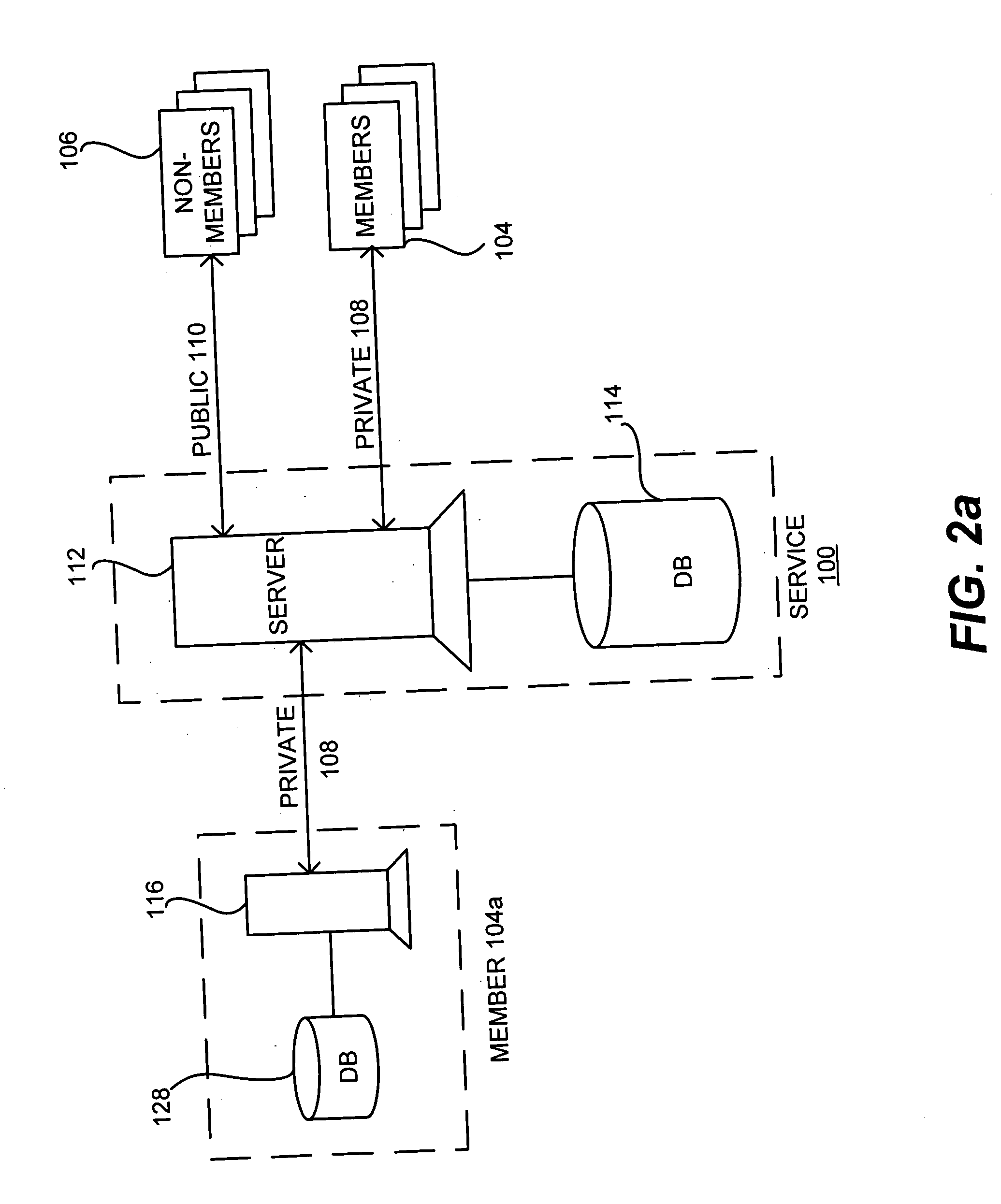Synchronization and merge engines
a technology of synchronization and merge engine, applied in the field of personal information management, can solve the problems of friendship, personal loss, business loss, and inability to maintain up-to-date contact information between friends, family, and customers,
- Summary
- Abstract
- Description
- Claims
- Application Information
AI Technical Summary
Benefits of technology
Problems solved by technology
Method used
Image
Examples
Embodiment Construction
[0045] The Figures (“FIG. ”) and the following description relate to preferred embodiments of the present invention by way of illustration only. It should be noted that from the following discussion, alternative embodiments of the structures and methods disclosed herein will be readily recognized as viable alternatives that may be employed without departing from the principles of the claimed invention.
[0046] The present invention includes a synchronization engine (or system) and a merge engine (or system) for synchronizing information between various layers and levels and merging information within those synchronized layers and levels with minimal user intervention. A layer or level may be of a physical (e.g., a device) or logical (location of information in various locations, e.g. various devices or services).
Architecture Overview
[0047] Referring now to FIG. 1, it illustrates an embodiment of a network environment in accordance with the present invention. The network environmen...
PUM
 Login to View More
Login to View More Abstract
Description
Claims
Application Information
 Login to View More
Login to View More - R&D
- Intellectual Property
- Life Sciences
- Materials
- Tech Scout
- Unparalleled Data Quality
- Higher Quality Content
- 60% Fewer Hallucinations
Browse by: Latest US Patents, China's latest patents, Technical Efficacy Thesaurus, Application Domain, Technology Topic, Popular Technical Reports.
© 2025 PatSnap. All rights reserved.Legal|Privacy policy|Modern Slavery Act Transparency Statement|Sitemap|About US| Contact US: help@patsnap.com



